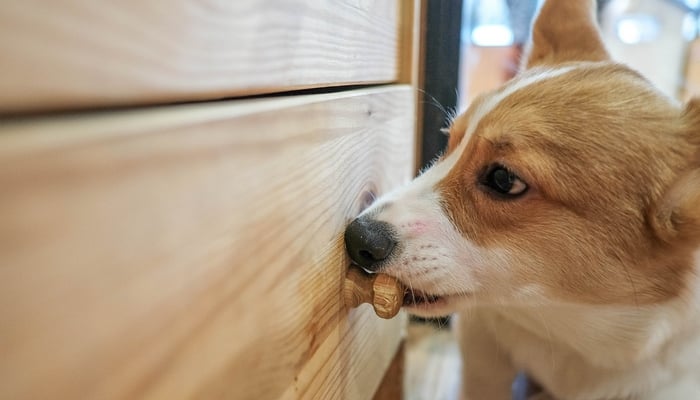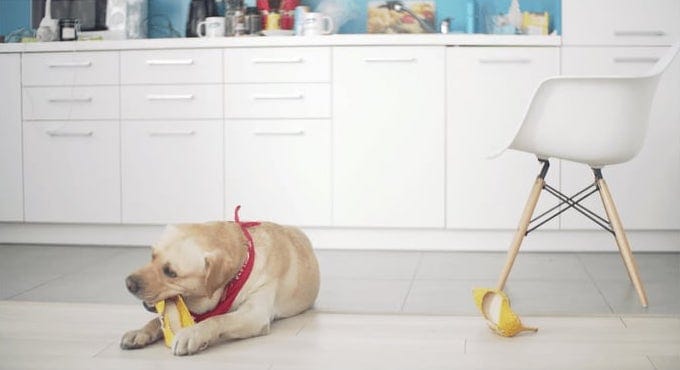Introduction
Dog chewing on furniture can be a frustrating and costly problem for pet owners. Whether it’s a puppy teething on table legs or an adult dog with a chewing habit, the damage caused to furniture can be significant. While there are various commercial products available to deter dogs from chewing, many pet owners turn to home remedies in hopes of finding a cost-effective and natural solution. In this comprehensive exploration, we delve into the effectiveness of home remedies for preventing stop dog chewing furniture home remedies and provide insights into their potential benefits and limitations.
Understanding Dog Chewing Behavior
Before discussing home remedies, it’s essential to understand why dogs chew on furniture in the first place. Chewing is a natural behavior for dogs, serving several purposes, including teething, exploration, boredom relief, and dental care. Puppies, in particular, go through a teething phase during which they instinctively chew on objects to soothe their sore gums. Adult dogs may chew out of boredom, anxiety, or a lack of appropriate outlets for their energy. Understanding the underlying reasons for chewing behavior can help pet owners address the issue more effectively and choose the right approach for prevention.

Common Home Remedies for Preventing Dog Chewing
Numerous home remedies are purported to deter dogs from chewing on furniture, ranging from harmless taste deterrents to sensory distractions. Some of the most commonly recommended home remedies include:
- Bitter Apple Spray: Bitter-tasting sprays or solutions, such as bitter apple spray, are often applied to furniture surfaces to discourage chewing. The unpleasant taste is intended to deter dogs from mouthing or biting on the furniture.
- Citrus or Vinegar Spray: Citrus-based or vinegar solutions sprayed on furniture are believed to have a repelling effect on dogs due to their strong scent and taste. These solutions are often homemade and applied to furniture surfaces as a deterrent.
- Cayenne Pepper or Hot Sauce: Spicy substances like cayenne pepper or hot sauce are sometimes used as deterrents to discourage chewing. The intense heat and taste are thought to dissuade dogs from chewing on treated surfaces.
- Aluminum Foil or Double-Sided Tape: Covering furniture surfaces with aluminum foil or double-sided tape can create an unpleasant texture that dogs find unappealing. The crinkly noise of foil and the sticky sensation of tape may deter chewing behavior.
- Commercial Repellent Sprays: In addition to homemade remedies, there are also commercial repellent sprays available that are specifically formulated to deter dogs from chewing on furniture. These sprays often contain bitter-tasting or odoriferous ingredients.
Effectiveness of Home Remedies
While home remedies for preventing dog chewing on furniture are widely recommended, their effectiveness can vary depending on various factors, including the individual dog’s temperament, preferences, and the underlying reason for the chewing behavior. Some dogs may be deterred by the taste or scent of certain home remedies, while others may be unaffected or even intrigued by them. Additionally, the consistency and application of home remedies can influence their effectiveness. For example, bitter sprays may need to be reapplied frequently, especially after cleaning or exposure to moisture, to maintain their deterrent effect.

Considerations and Limitations
Despite their popularity, it’s essential for pet owners to approach home remedies for preventing dog chewing on furniture with caution and realistic expectations. While some home remedies may prove effective for certain dogs, others may not yield the desired results. Additionally, reliance solely on home remedies may overlook underlying issues contributing to the chewing behavior, such as anxiety, boredom, or inadequate exercise. In such cases, addressing the root cause of the behavior through training, environmental enrichment, and behavioral modification may be necessary for long-term success.

Monitoring and Adjusting Home Remedies
It’s important for pet owners to closely monitor the effectiveness of home remedies for preventing dog chewing on furniture and be prepared to adjust their approach as needed. Dogs may exhibit varying responses to different deterrents, and what works for one dog may not work for another. Regular observation of your dog’s behavior and reactions to home remedies can help you determine their efficacy and make necessary adjustments. If a particular remedy seems ineffective or if chewing behavior persists despite its use, consider trying alternative methods or consulting with a veterinarian or professional dog trainer for guidance.
Consistency and Persistence
Consistency and persistence are key factors in the success of any behavior modification program, including efforts to prevent dog chewing on furniture. Establishing a consistent routine for applying home remedies, reinforcing desired behaviors, and providing appropriate alternatives for chewing can help reinforce boundaries and expectations for your dog. Consistent training and reinforcement, coupled with patience and persistence, can lead to positive behavior change over time. It’s essential for pet owners to remain committed to their efforts and not become discouraged by setbacks or challenges along the way.

Supplementary Strategies for Prevention
In conjunction with home remedies, pet owners can employ supplementary strategies to prevent stop dog chewing furniture home remedies effectively. These strategies may include:
- Providing appropriate chew toys and interactive puzzles to redirect chewing behavior onto more suitable objects.
- Ensuring regular exercise and mental stimulation to prevent boredom and excess energy, which can contribute to destructive chewing.
- Establishing consistent training and reinforcement of desired behaviors, such as “leave it” or “drop it,” to discourage chewing on furniture.
- Creating a safe and comfortable environment for the dog, including designated rest areas and confined spaces when unsupervised, to prevent access to furniture.
- Seeking professional guidance from a veterinarian or certified animal behaviorist to address underlying behavioral issues and develop a comprehensive management plan.

Conclusion
In conclusion, while home remedies for preventing stop dog chewing furniture home remedies may offer some degree of effectiveness, their success relies on various factors and may vary from dog to dog. Pet owners should approach home remedies with realistic expectations and consider supplementary strategies for prevention, such as training, environmental enrichment, and behavioral modification. Additionally, addressing the underlying reasons for chewing behavior is crucial for long-term success. By combining home remedies with proactive management techniques and professional guidance, pet owners can effectively deter dogs from chewing on furniture and foster a harmonious living environment for both pets and humans.









